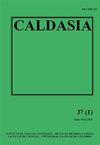新热带地区非洲巨型蜗牛种群密度的变化
IF 0.3
4区 生物学
Q4 PLANT SCIENCES
引用次数: 0
摘要
巨型非洲蜗牛(Lissachatina fulica)是世界上100种最严重的入侵物种之一,自20世纪80年代以来就在新热带地区有记录。温度和降水变量影响蜗牛种群密度;然而,尚未在区域范围内对黄曲霉的这些关系进行研究。本文采用文献检索、描述性统计和主成分分析方法,首次描述了新热带地区黄颡鱼种群密度的变化。我们发现22项研究覆盖了6个国家的36个地区。平均蜗牛密度为11.55±28.32 ind/m2,古巴最低(0.0002 ind/m2),委内瑞拉最高(150 ind/m2)。这些值记录在人类足迹的21%至93%、年降水量的710毫米至4438毫米、最冷地区的平均温度13ºC至27ºC和季节性温度的3ºC至40ºC之间。主成分分析表明,低密度可能出现在各种环境条件下,而中密度和高密度似乎出现在更具体的气候组合中。总之,新热带地区Lissachatina fulica密度的增加似乎受到气候变化的影响,特别是最冷地区的平均温度和年降水量,这支持了文献中关于蜗牛群落的先前发现。未来对这种入侵物种的监测,在扩大的空间和时间尺度上进行,可能会提供工具来建立蜗牛密度值和影响之间的关系。本文章由计算机程序翻译,如有差异,请以英文原文为准。
Variation in the population density of the Giant African Snail (Lissachatina fulica) in the Neotropical region
The Giant African Snail (Lissachatina fulica) is one of the 100 world’s worst invasive species and has been recorded in the Neotropical region since the 1980s. Temperature and precipitation variables affect snail population density; however, these relationships have not been investigated for L. fulica on a regional scale. Here, we made the first description of variation in population density of L. fulica in the Neotropical region using a literature search, descriptive statistics, and a Principal Component Analysis (PCA). We found 22 studies covering 36 localities in six countries. The mean snail density was 11.55 ± 28.32 ind/m2, with the lowest value recorded in Cuba (0.0002 ind/m2) and the highest value recorded in Venezuela (150 ind/m2). These values were recorded between 21 % to 93 % of Human Footprint, 710 mm to 4438 mm of Annual Precipitation, 13 ºC to 27 ºC, Mean Temperature of the Coldest Quarter, and 3 ºC to 40 ºC of Temperature Seasonality. The PCA suggested that low densities can occur in various environmental conditions, whereas medium and high densities seem to appear in more specific climatic combinations. In conclusion, increased densities of Lissachatina fulica in the Neotropics seem to be influenced by climatic variations, especially the Mean Temperature of the Coldest Quarter and Annual Precipitation, supporting previous findings in the literature regarding the snail establishment. Future monitoring of this invasive species, performed at expanded spatial and temporal scales, may provide tools to establish a relationship between snail density values and impact.
求助全文
通过发布文献求助,成功后即可免费获取论文全文。
去求助
来源期刊

Caldasia
PLANT SCIENCES-ZOOLOGY
CiteScore
1.30
自引率
16.70%
发文量
28
审稿时长
24 weeks
期刊介绍:
La revista está orientada a publicar contribuciones originales escritas en español o inglés relacionadas con la documentación, comprensión y conservación de la diversidad biológica. La revista contempla el tema de la biodiversidad en un sentido amplio y por tanto incluye trabajos en áreas como botánica, zoología, ecología, biodiversidad, biogeografía, taxonomía, sistemática, conservación, y disciplinas afines.
 求助内容:
求助内容: 应助结果提醒方式:
应助结果提醒方式:


